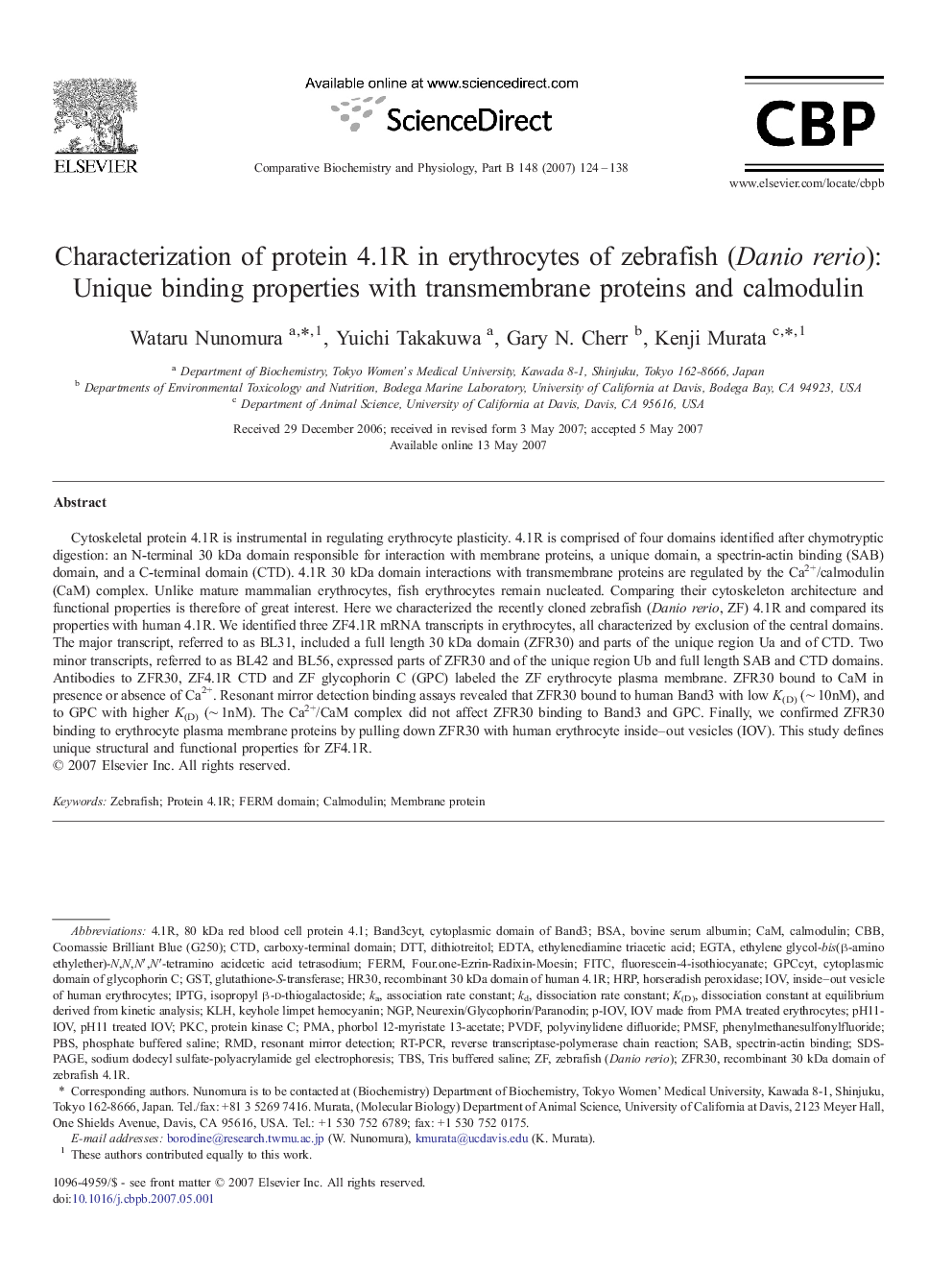| Article ID | Journal | Published Year | Pages | File Type |
|---|---|---|---|---|
| 1976718 | Comparative Biochemistry and Physiology Part B: Biochemistry and Molecular Biology | 2007 | 15 Pages |
Cytoskeletal protein 4.1R is instrumental in regulating erythrocyte plasticity. 4.1R is comprised of four domains identified after chymotryptic digestion: an N-terminal 30 kDa domain responsible for interaction with membrane proteins, a unique domain, a spectrin-actin binding (SAB) domain, and a C-terminal domain (CTD). 4.1R 30 kDa domain interactions with transmembrane proteins are regulated by the Ca2+/calmodulin (CaM) complex. Unlike mature mammalian erythrocytes, fish erythrocytes remain nucleated. Comparing their cytoskeleton architecture and functional properties is therefore of great interest. Here we characterized the recently cloned zebrafish (Danio rerio, ZF) 4.1R and compared its properties with human 4.1R. We identified three ZF4.1R mRNA transcripts in erythrocytes, all characterized by exclusion of the central domains. The major transcript, referred to as BL31, included a full length 30 kDa domain (ZFR30) and parts of the unique region Ua and of CTD. Two minor transcripts, referred to as BL42 and BL56, expressed parts of ZFR30 and of the unique region Ub and full length SAB and CTD domains. Antibodies to ZFR30, ZF4.1R CTD and ZF glycophorin C (GPC) labeled the ZF erythrocyte plasma membrane. ZFR30 bound to CaM in presence or absence of Ca2+. Resonant mirror detection binding assays revealed that ZFR30 bound to human Band3 with low K(D) (∼ 10nM), and to GPC with higher K(D) (∼ 1nM). The Ca2+/CaM complex did not affect ZFR30 binding to Band3 and GPC. Finally, we confirmed ZFR30 binding to erythrocyte plasma membrane proteins by pulling down ZFR30 with human erythrocyte inside–out vesicles (IOV). This study defines unique structural and functional properties for ZF4.1R.
